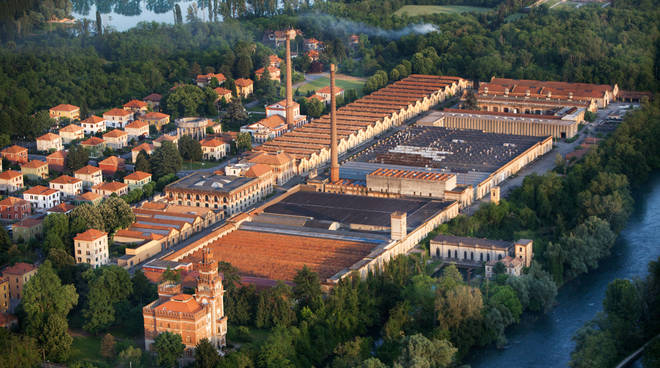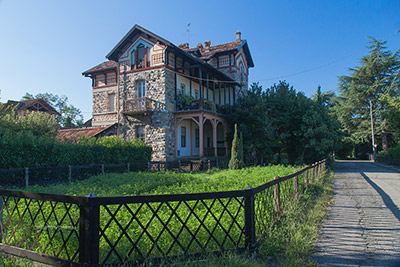THE PO PLAIN. Completely flat it extends from Bergamo in the north to Mantua in the southeast.
MANTUA (pop 49,000). Actually in Milan Province, it is just north of Parma. The city was taken over by the wealthy horse-breeding Gonzaga family in 1328 who then controlled it for the next 300 years.
Palazzo Ducale. The Gonzagas built this 500-room palace between 1465-1474. The tour sees only 40 of the rooms filled with art. Start in the castle and move to the palace. Some of the highlights are 9 Flemish tapestries based on designs by Raphael and the frescoed and gilt ceilings including one that is a labyrinth.
BRESCIA (pop 193,000). The old town is a maze of narrow streets with few people. There are several Roman ruins, the Templo Capitolino being the most famous.
Santa Giulia. The best site in Brescia, this cathedral is unusual for Romanesque churches as it is round. It adjoins a monastery and contains a museum.

Museo Mille Miglia. The original Mille Miglia (1000 Miles) ran between 1927 and 1957 and was one of Italy’s most legendary endurance car races. It started in Brescia and took about 16 hours to complete. The museum has some of the greatest cars to finish as well as old car memorabilia. The Ferrari Museum had cars that competed in it.
BERGAMO (pop 120,000). Bergamo’s old town is walled with an array of architecture. The city was ruled by Venice for 350 years until Napoleon arrived.
Accademia Carrara. This is one of Italy’s great art repositories with a range of Italian masters including Raphael, Botticelli, Canaletto, and Titian dating from the 15th to the 19th centuries.
Crespi d’Adda. Just SW of Bergamo, this Unesco-listed town was one of the first to integrate a purpose-built town with a large industry – a huge cotton mill. Founded in 1878, smart 2-story homes were built for the workers along with a church, school, stores, and a cemetery. Business boomed in WWI as it produced cloth for airplanes. In 1923, 3,600 workers were employed with 1,200 living in the town. At one end are several imposing mansions lived in by the executives. The factory closed in 2003 and the homes, many converted into duplexes, are now privately owned. Several school groups were touring the site when I was there. Free.
Nembro Public Library. The town of Nembro has a public library on the Nomad Mania list for modern architecture. The main library is in an attractive old building but next door, they have constructed a 4-story glass-walled tower. On the outside is a metal frame holding hundreds of Indian red-coloured, square plastic “plates” that I guess represent books. The librarian who gave me a tour said he didn’t like the building. Open on one side to the top, noise travels all over disrupting the normal quiet of the library. It is also impossible to clean the outside of the windows.
The library had 2 classes of Muslim women learning English.





